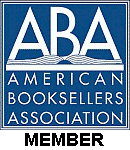Beer Bread, a bronze age flavor variation with other ideas
by Steven Williams
 The basic ingredients of beer are water, barley, yeast, and hops. In fact, this list of ingredients is the same as the one listed in the oldest food quality regulation in the world, The Reinheitsgebot. This regulation or law is best known in English as the German Beer Purity Law. The Reinheitsgebot was first put into legal effect in 1516 and stipulated that beer should only contain water, barley, and hops. Yeast was not considered an ingredient because it was not known to be a microorganism until the mid-nineteenth century. Not surprisingly, these basic ingredients used to make beer (water, grain, and yeast) happen to be almost exactly the same ingredients used in the simplest breads. It is because of this similarity in ingredients that beer has such a complimentary effect when it is used as a primary ingredient for 'quick' bread, and it is also why the beer bread type of 'quick' bread tastes so good. The following recipe makes an especially tasty beer bread and as an extra it has some added historical flavorings: barley was the first domesticated grain most suitable for growing in Northern Europe and honey was the first sweetener. This basic beer bread recipe is also easily variable and very forgiving for even the most inexperienced cook to experiment with.
The basic ingredients of beer are water, barley, yeast, and hops. In fact, this list of ingredients is the same as the one listed in the oldest food quality regulation in the world, The Reinheitsgebot. This regulation or law is best known in English as the German Beer Purity Law. The Reinheitsgebot was first put into legal effect in 1516 and stipulated that beer should only contain water, barley, and hops. Yeast was not considered an ingredient because it was not known to be a microorganism until the mid-nineteenth century. Not surprisingly, these basic ingredients used to make beer (water, grain, and yeast) happen to be almost exactly the same ingredients used in the simplest breads. It is because of this similarity in ingredients that beer has such a complimentary effect when it is used as a primary ingredient for 'quick' bread, and it is also why the beer bread type of 'quick' bread tastes so good. The following recipe makes an especially tasty beer bread and as an extra it has some added historical flavorings: barley was the first domesticated grain most suitable for growing in Northern Europe and honey was the first sweetener. This basic beer bread recipe is also easily variable and very forgiving for even the most inexperienced cook to experiment with.
A basic 'quick' Beer Bread recipe with some Bronze Age flavorings:
Ingredients:
1 1/2 cups barley flour
1 1/2 cups whole wheat bread or pastry flour
14 fluid ounces of beer at room temperature (one bottle of beer plus a little more liquid, beer or water) 1 teaspoon salt
1 teaspoon salt
2 tablespoons honey
1 tablespoon baking powder
Optional ingredients:
4 tablespoons granulated sugar can be substituted for the honey
1 tablespoon butter at room temperature
egg glaze: 1 egg and 2 teaspoons water, beaten
Turn the oven 'On' to 375 degrees so that it will already be pre-heated by the time that the batter is ready to bake. For a basic beer bread mix, combine and mix the dry ingredients, the flour, sugar (if you are using this instead of honey), salt, and baking powder, in a large mixing bowl. Add the honey (if you are using this instead of sugar) and then slowly stir in the beer, mixing everything together just enough to combine all the ingredients. Generally, you will get the lightest or least dense 'quick' bread if you do not mix it any more than necessary to bring all the ingredients together. Because of this, it is at this step, just before you begin to stir in the beer, that you should add any additional moist ingredients like fresh herbs or fruit or cheese. The resulting batter will be quite thick.  Spread it into a greased eight-inch loaf pan or any other appropriately sized baking pan. Generally, almost any sort of baking pan that is the right size to hold the batter will work for cooking simple 'quick' breads like this beer bread, but a cast-iron skillet makes an exceptionally fine baking pan for this type of bread. It is at this point, once the batter has been put into the baking pan, that you would also brush the top of the uncooked loaf with the egg glaze if you have decided to add this to your bread.
Spread it into a greased eight-inch loaf pan or any other appropriately sized baking pan. Generally, almost any sort of baking pan that is the right size to hold the batter will work for cooking simple 'quick' breads like this beer bread, but a cast-iron skillet makes an exceptionally fine baking pan for this type of bread. It is at this point, once the batter has been put into the baking pan, that you would also brush the top of the uncooked loaf with the egg glaze if you have decided to add this to your bread.
Beer-leavened breads turn out best when they are cooked using a slow baking time, usually between forty-five minutes to an hour. The loaf will be finished baking when its center is completely cooked. To test if the center is cooked yet or not, stick a knife or a toothpick through the center of the loaf. If it comes out clean then the loaf is ready. After baking, remove the loaf from the baking pan. At this point you can rub the top and sides of the loaf with butter if this is your preference. After removing the loaf from the baking pan, allow the loaf to cool on a wire rack before slicing and serving it. Generally, allowing the loaf to cool will make it a little easier to slice, but it may be difficult to wait too long before tasting it. Keep in mind that all 'quick' breads (i.e., a little heavy or dense) will be a bit difficult to slice.  In beer bread as with most types of 'quick' breads it is the combined effects of the baking powder, the carbonation in the beer, and the yeast in the beer that together cause the beer bread to rise or 'leaven', though the result will always be relatively dense when compared to true 'yeast' breads. Because the beer provides a significant part of the leavening effect, a 'bottle-conditioned' beer will produce the lightest beer bread. This is because 'bottle-conditioned' beer has the largest amount of active (i.e. live) yeast in it.
In beer bread as with most types of 'quick' breads it is the combined effects of the baking powder, the carbonation in the beer, and the yeast in the beer that together cause the beer bread to rise or 'leaven', though the result will always be relatively dense when compared to true 'yeast' breads. Because the beer provides a significant part of the leavening effect, a 'bottle-conditioned' beer will produce the lightest beer bread. This is because 'bottle-conditioned' beer has the largest amount of active (i.e. live) yeast in it.
In this basic recipe, the proportion of barley to whole-wheat flour can be changed to as much as about three cups of whole-wheat flour with no barley flour at all. Generally, whole-wheat bread flour will be denser and chewier than whole-wheat pastry flour, which will be denser than regular bread flour, which will be denser than general-purpose flour. Also, with experience it will be easier to tell from the texture of the batter whether more flour or more liquid needs to be added to achieve the best consistency before the batter is spread into the baking pan and placed in the oven.
 There are many possible flavor variations that can be made beginning with this basic recipe and the possibilities are only limited by your imagination. You can add different herbs or even native plants for different flavors. Some native plants that might be fun to experiment with are wild garlic, burdock roots, wild onions, young nettles, etc. Experiment with different beers and ales also. A darker beer will give the bread a deeper flavor. Fruit flavored ales like apricot ale, raspberry ale, peach ale, etc., can be used as the basis for a sweeter or dessert type of beer bread especially with the addition of wild or store-bought berries and a larger quantity of granulated sugar, up to about 1/3 of a cup, added to the mix.
There are many possible flavor variations that can be made beginning with this basic recipe and the possibilities are only limited by your imagination. You can add different herbs or even native plants for different flavors. Some native plants that might be fun to experiment with are wild garlic, burdock roots, wild onions, young nettles, etc. Experiment with different beers and ales also. A darker beer will give the bread a deeper flavor. Fruit flavored ales like apricot ale, raspberry ale, peach ale, etc., can be used as the basis for a sweeter or dessert type of beer bread especially with the addition of wild or store-bought berries and a larger quantity of granulated sugar, up to about 1/3 of a cup, added to the mix.
 A quick note about gluten:
A quick note about gluten:
Gluten, also called glutenin, is a particular type of protein found in various grains. Wheat generally has some of the highest gluten content of all cereal grains. In general, protein molecules are strong and somewhat stretchy, but gluten is an especially elastic and stretchy type of protein and wheat gluten is an especially elastic type of gluten protein. It is this stretchiness that gives bread its lightness when combined with yeast. The yeast digests the sugar and starch in the flour producing carbon dioxide gas as a by-product of digestion. The gas bubbles are held in place by the stretchy, elastic gluten and this gives yeast breads their characteristic airiness and lightness. Using high gluten flour like wheat flour or especially a bread type of wheat flour, (i.e., hard red winter wheat flour) in a 'quick' bread yields bread that is considerably denser and heavier that most people are familiar with. There are other choices of flour that can add interesting complexity of flavor or different tastes to your beer bread. Rye flour has a low gluten content (only about 2% versus about 13-15% in wheat flour). Barley flour has both significantly less gluten than wheat plus barley gluten is not as 'stretchy' as wheat gluten. Oat flour, even though it has a relatively high protein content (about 17% versus 12% in hard wheat flour), has no gluten at all.  Therefore, adding rye, barley, or oat flour or, in fact, any other non-wheat flour to your beer bread will make it denser than if you use only wheat flour. Always keep in mind though that because beer bread is not a 'yeast' bread, it will always be quite a bit denser than store-bought or even homemade sandwich bread, even the whole-wheat variety. For 'quick' breads like beer bread, using whole-wheat flour instead of 'bread' flour and especially 'general purpose' flour also will make for a noticeably denser loaf. When substituting other flours in the basic recipe, the general rule of thumb is to use no less than one cup of wheat flour for every cup used of non-wheat flour, a one-to-one ratio of wheat flour to other flour(s).
Therefore, adding rye, barley, or oat flour or, in fact, any other non-wheat flour to your beer bread will make it denser than if you use only wheat flour. Always keep in mind though that because beer bread is not a 'yeast' bread, it will always be quite a bit denser than store-bought or even homemade sandwich bread, even the whole-wheat variety. For 'quick' breads like beer bread, using whole-wheat flour instead of 'bread' flour and especially 'general purpose' flour also will make for a noticeably denser loaf. When substituting other flours in the basic recipe, the general rule of thumb is to use no less than one cup of wheat flour for every cup used of non-wheat flour, a one-to-one ratio of wheat flour to other flour(s).
Some more detailed suggestions for beer bread flavor variations: For an onion rye bread sauté about one cup of finely chopped onion and one tablespoon of caraway seeds in olive oil, or any other cooking oil, over a medium heat. Cook this mixture until the onion is translucent and beginning to brown, usually about five to eight minutes. Let this cooked onion and caraway seed mixture cool to room temperature before adding it to the beer bread mix. Also, add it just before you are about to stir the beer into the mixed dry ingredients. You might need to add just a little more beer or water with the cooked onion and caraway mixture to achieve the right texture for the batter. You can obtain a stronger rye flavor by substituting up to one cup of rye flour for an equal measure of the whole wheat or bread flour you are using to make your beer bread batter mix.
For an onion rye bread sauté about one cup of finely chopped onion and one tablespoon of caraway seeds in olive oil, or any other cooking oil, over a medium heat. Cook this mixture until the onion is translucent and beginning to brown, usually about five to eight minutes. Let this cooked onion and caraway seed mixture cool to room temperature before adding it to the beer bread mix. Also, add it just before you are about to stir the beer into the mixed dry ingredients. You might need to add just a little more beer or water with the cooked onion and caraway mixture to achieve the right texture for the batter. You can obtain a stronger rye flavor by substituting up to one cup of rye flour for an equal measure of the whole wheat or bread flour you are using to make your beer bread batter mix.
The flavor of cheddar cheese and dill go well together. To make a cheddar and dill beer bread combine two tablespoons of chopped fresh dill with two tablespoons of finely grated sharp cheddar cheese and add it to the beer bread mix.
 Another variant is to add garlic and complimentary herbs. For this variation using dried herbs, combine two minced garlic cloves with one teaspoon of dried rosemary, one teaspoon of dried oregano, and one teaspoon of dried thyme in the basic beer bread mix. If fresh herbs are available, use one chopped tablespoon of each. You will achieve the best effect if you add the herbs to the dry ingredients before stirring in the beer.
Another variant is to add garlic and complimentary herbs. For this variation using dried herbs, combine two minced garlic cloves with one teaspoon of dried rosemary, one teaspoon of dried oregano, and one teaspoon of dried thyme in the basic beer bread mix. If fresh herbs are available, use one chopped tablespoon of each. You will achieve the best effect if you add the herbs to the dry ingredients before stirring in the beer.
Dill and chives also go well together in this bread. For this variation, combine two tablespoons of fresh dill (or 2 teaspoons dried dill) with about 1/4 cup of chopped fresh chives in the basic beer bread mix.
 For an Italian type bread combine one teaspoon of dried basil with one teaspoon of dried oregano, two minced garlic cloves, and 1/2 cup of finely grated parmesan or Romano cheese and add stir this into the basic beer bread mix. If fresh herbs are available, use one chopped tablespoon of each.
For an Italian type bread combine one teaspoon of dried basil with one teaspoon of dried oregano, two minced garlic cloves, and 1/2 cup of finely grated parmesan or Romano cheese and add stir this into the basic beer bread mix. If fresh herbs are available, use one chopped tablespoon of each.
Some other possible variations of ingredients to consider are: any dried or fresh herbs at a ratio of about one teaspoon dried or one tablespoon fresh each; any type of hard cheese using 1/2 cup of it freshly grated; add 1/2 cup of chopped scallions or 1/2 of cup chopped fresh parsley; add 1/2 cup of rolled oats in place of 1/2 cup of the wheat flour; the possibilities are endless.
 A note about hops, beer flavor, and bread
A note about hops, beer flavor, and bread
Hops are added to beer as a bitterness that counters the sweetness of the malt and for the pleasing aroma it adds to beer. In addition to flavor, hops also provide a preservative quality that extends the shelf life of beer, especially important when no refrigeration technology existed. Before the introduction of hops to the process of beer brewing, beginning in about the eleventh century, the desirable qualities of bitterness and preservative were provided by brewing botanicals, i.e., herb blends known as 'gruit' or 'grut'. The use of some brewing botanicals endure either as ingredients in pre-hops styles of traditional beers or as flavorings used to add complexity to modern beers. Significantly, the herbs used in gruits all tend to be mildly to moderately narcotic making the choice of their blends and proportions complex, relatively expensive, and slightly problematic.  The introduction of hops greatly simplified the use of botanicals in brewing both for flavoring as well as preservation. Hops themselves are actually the female flowers of the hop plant (Humulus lupulus). It is important to note that a significant part of the flavoring quality that hops add to beer is the hops variety added to a beer during brewing specifically for ‘the nose’. This flavor quality provided by smell is based on aromatic oils and, unfortunately, these aromatic oils have a particular tendency to cook out of food under prolonged or high heat. In general though, beer lovers will be most satisfied with beer breads that use beers that they also enjoy drinking. The rule of thumb is to use a beer that appeals to you as a beverage and the resulting beer bread made with it should also appeal to you.
The introduction of hops greatly simplified the use of botanicals in brewing both for flavoring as well as preservation. Hops themselves are actually the female flowers of the hop plant (Humulus lupulus). It is important to note that a significant part of the flavoring quality that hops add to beer is the hops variety added to a beer during brewing specifically for ‘the nose’. This flavor quality provided by smell is based on aromatic oils and, unfortunately, these aromatic oils have a particular tendency to cook out of food under prolonged or high heat. In general though, beer lovers will be most satisfied with beer breads that use beers that they also enjoy drinking. The rule of thumb is to use a beer that appeals to you as a beverage and the resulting beer bread made with it should also appeal to you.
For additional recipes see also:
Andalusian Gaspacho, a recipe by Van Wyck Brooks
Spring Fava Beans, Roman Style
Christmas holiday food and drink from the works of Charles Dickens
Beef Burgundy, Crackling Bread, Pice Ar Y Maen, Sevillian Yellow Plum Conserve, and Les Ioles (Writers' and Artists' recipes)
Omlette Aurore by Alice B. Toklas, Artists' and Writers' Recipes
Home
Older Article: Jane K. Cleland, amateur sleuth cozy mysteries with a flavoring of ‘The Antiques Roadshow’

Beer Bread, a bronze age flavor variation with other ideas by Steven Williams is licensed under a Creative Commons Attribution-Noncommercial-No Derivative Works 3.0 United States License.
Permissions beyond the scope of this license may be available by contacting Steven Williams through Bookmarc's BookmarcsOnline.








